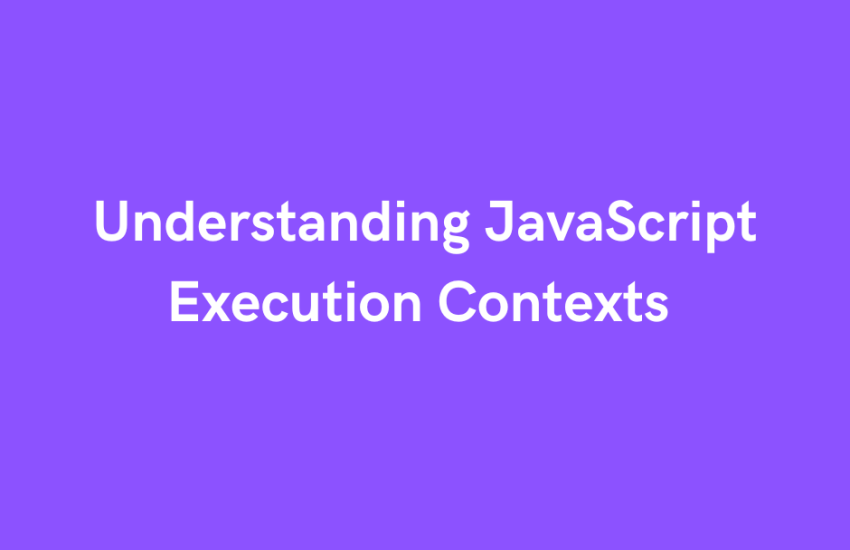JavaScript, being a single-threaded, asynchronous language, relies heavily on its execution contexts to manage the execution of code. Understanding execution contexts is fundamental to mastering JavaScript, as it governs how your code is executed and how variables, functions, and scope are managed. In this post, we’ll explore what execution contexts are, how they work, and why they are crucial for writing efficient and bug-free JavaScript code.
What is an Execution Context
An execution context in JavaScript can be conceptualized as the environment where your JavaScript code undergoes evaluation and execution.It consists of three main components:
- Global Execution Context: This is the default execution context in which the top-level code is executed. It represents the global scope and is created when your JavaScript program starts running.
- Function Execution Context: Whenever a function is invoked, a new execution context is created for that function. This execution context includes the function’s arguments, local variables, and any nested functions.
- Eval Execution Context (Rarely Used): The eval() function in JavaScript creates a new execution context. However, its usage is discouraged due to security and performance reasons.
How Execution Contexts Work
When your JavaScript code is executed, the JavaScript engine creates an execution context stack, also known as the “call stack”. Each time a function is called, a new execution context is pushed onto the stack. When the function completes its execution, its execution context is removed from the stack.
Let’s illustrate this with an example:
function greet(name) {
console.log(`Hello, ${name}!`);
}
function sayHello() {
let name = "John";
greet(name);
}
sayHello();
- When sayHello() is called, a new execution context for sayHello() is created and pushed onto the stack.
- Inside sayHello(), a new variable name is declared and initialized with the value “John”.
- Next, greet(name) is called, creating a new execution context for greet() and pushing it onto the stack.
- Inside greet(), the message “Hello, John!” is logged to the console.
- Once greet() finishes executing, its execution context is popped off the stack.
- Finally, sayHello() finishes executing, and its execution context is popped off the stack.
Scope and Execution Contexts
Execution contexts play a crucial role in determining the scope of variables and functions in JavaScript. Each execution context has its own lexical environment, which consists of all the variables, functions, and their respective scopes.
Variables declared with var are function-scoped, meaning they are accessible within the function in which they are declared, as well as any nested functions. On the other hand, variables declared with let and const are block-scoped, meaning they are accessible only within the block in which they are declared.
Conclusion
In summary, comprehending execution contexts is crucial for crafting JavaScript code that is both efficient and devoid of bugs. By grasping how execution contexts work, you gain insights into how variables and functions are scoped and how the call stack manages function invocations. This knowledge empowers you to write cleaner, more maintainable code and debug JavaScript errors more effectively.




